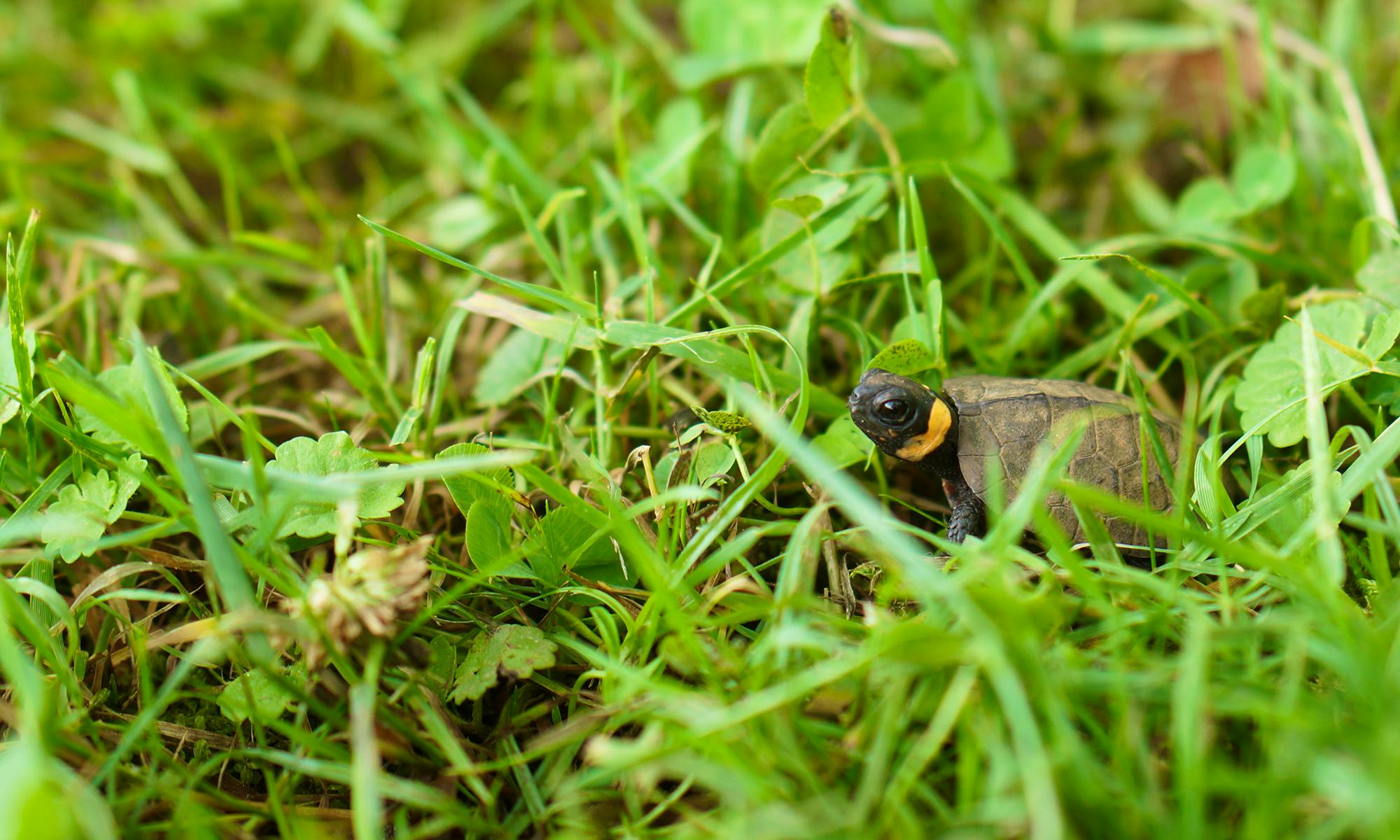Meet the tiniest turtle in North America: the bog turtle! These turtles grow between 3 to 4.5 inches long. They have a yellow-orange spot on either side of their necks and dark brown-black shells. While you are unlikely to see one in the wild, these turtles need your help. Discover more about bog turtles in this Q&A with Senior Southeast Representative, Tracy Davids.
How old are these turtles?
Bog turtles were around during the time of the dinosaurs. Except, they survived the Cretaceous-Paleogene extinction event, which makes me appreciate their resilience.
But if you’re wondering how old these turtles can get: Bog turtles can live for more than 30 years in the wild.
Where do bog turtles live?
Bog turtles only live in the eastern U.S., mostly in the Appalachian Mountains. There are two distinct populations: northern and southern. The northern bog turtle’s habitat is generally found in sunny, low-lying wetlands surrounded by forest. This population stretches from New York and western Massachusetts south to Maryland. Southern bog turtle habitat tends to occur in higher elevation mountain bogs of the Blue Ridge Mountains. Mountain bogs are one of our continent’s rarest habitats. Many are lost to draining and ditching for agriculture, groundwater depletion and development.
Have you ever seen a wild bog turtle?
No, I have never seen a bog turtle in its natural habitat. But this doesn’t surprise me. These turtles are one of America’s rarest animals. They are also secretive, hibernating in deep mud from early fall to spring and burying themselves in mud when threatened. Plus, the bogs they inhabit are just as rare — and disappearing.
Honestly, I don’t mind if I ever see one. I’m content simply knowing they are there.
What roles do bog turtles play in their habitats?
Like many turtles, bog turtles are predators, prey, seed dispersers, scavengers and engineers of their environment. As such, they contribute to overall habitat health and balance. In fact, the presence of these turtles in a bog indicates the habitat is healthy. This is important because bogs also support a variety of other plant and animal species.
Bog turtles are generalist omnivores and eat what is locally available in their habitat. This can give them an advantage because if one food source is not available, they have other options. Bog turtles’ preferred foods are invertebrates — including insects, worms and slugs — as well as amphibians. They also eat seeds, fruit, carrion and plants like pondweed, watercress and skunk cabbage.
Like all animals, they are food for others too. Small mammals like raccoons, opossums, skunks, minks, otter, foxes and even domestic animals like pet dogs all prey on these turtles. So, as you can imagine, when bog turtles disappear, it naturally impacts the plants and wildlife that share their habitat.
What are bog turtles poached for?
Sadly, because of their unique characteristics, including their tiny size and orange blotch on the side of their necks, along with their rareness, bog turtles are poached and sold on the illegal wildlife market as pets or collectibles. It’s challenging to enforce the laws protecting this turtle for a couple of reasons. First, their habitat is remote, mostly on private lands, and challenging to identify. Second, since it’s illegal to buy and sell them, the trade is secretive.
What can folks do to help these turtles?
While it is very rare to spot a bog turtle, if you are lucky enough to see one make sure you report the sighting to Mike Knoerr, Wildlife Coordinator for Bog Turtle Working lands, at mknoerr@vt.edu or Sue Cameron, Wildlife Biologist for U.S. Fish and Wildlife Forest, at susan_cameron@fws.gov. If we understand where the turtles are still thriving, we can better protect those habitats. Similarly, please report poaching to these biologists, or you can report it anonymously through the USFWS website.
You can also help bog turtles by caring for their environment. If you live near bog turtle habitat, reduce your use of pesticides that could pollute waterways and plant native plant species in your gardens to prevent accidentally introducing invasives to our natural areas.
And, if you are able, support organizations like Defenders of Wildlife who are working to protect bog turtles and their habitats.
We are counting down to the Endangered Species Act’s 50th anniversary. Follow along to learn more about threatened bog turtles and the other 49 species we’re highlighting!













Follow Defenders of Wildlife
facebook bluesky twitter instagram youtube tiktok threads linkedin